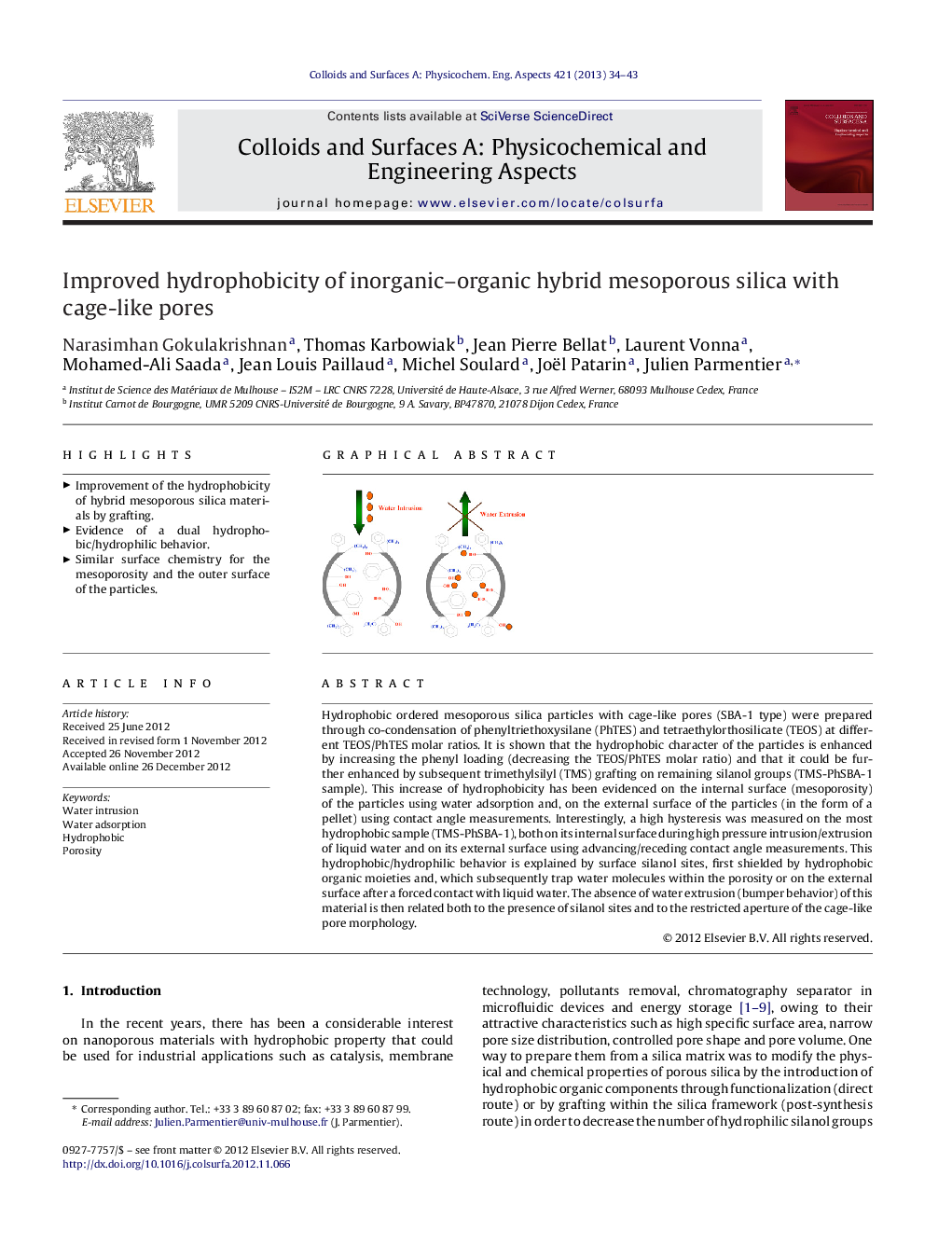| Article ID | Journal | Published Year | Pages | File Type |
|---|---|---|---|---|
| 593724 | Colloids and Surfaces A: Physicochemical and Engineering Aspects | 2013 | 10 Pages |
Hydrophobic ordered mesoporous silica particles with cage-like pores (SBA-1 type) were prepared through co-condensation of phenyltriethoxysilane (PhTES) and tetraethylorthosilicate (TEOS) at different TEOS/PhTES molar ratios. It is shown that the hydrophobic character of the particles is enhanced by increasing the phenyl loading (decreasing the TEOS/PhTES molar ratio) and that it could be further enhanced by subsequent trimethylsilyl (TMS) grafting on remaining silanol groups (TMS-PhSBA-1 sample). This increase of hydrophobicity has been evidenced on the internal surface (mesoporosity) of the particles using water adsorption and, on the external surface of the particles (in the form of a pellet) using contact angle measurements. Interestingly, a high hysteresis was measured on the most hydrophobic sample (TMS-PhSBA-1), both on its internal surface during high pressure intrusion/extrusion of liquid water and on its external surface using advancing/receding contact angle measurements. This hydrophobic/hydrophilic behavior is explained by surface silanol sites, first shielded by hydrophobic organic moieties and, which subsequently trap water molecules within the porosity or on the external surface after a forced contact with liquid water. The absence of water extrusion (bumper behavior) of this material is then related both to the presence of silanol sites and to the restricted aperture of the cage-like pore morphology.
Graphical abstractFigure optionsDownload full-size imageDownload as PowerPoint slideHighlights► Improvement of the hydrophobicity of hybrid mesoporous silica materials by grafting. ► Evidence of a dual hydrophobic/hydrophilic behavior. ► Similar surface chemistry for the mesoporosity and the outer surface of the particles.
